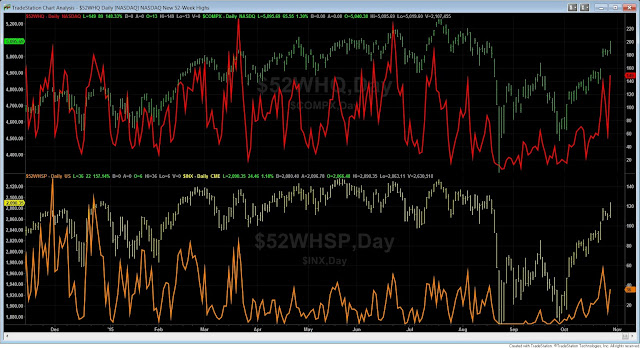We're incredibly honored to be highlighted and quoted in Dr. Brett Steenbarger's latest book,
Trading Psychology 2.0: From Best Practices To Best Processes. In addition to authoring the very popular
TraderFeed blog, Dr. Steenbarger is a Clinical Associate Professor of Psychiatry and Behavioral Sciences at SUNY Upstate Medical University in Syracuse, New York. He has worked since 2004 as a performance coach for proprietary trading firms, investment banks, and hedge funds including Tudor Investment Corporation.
He's previously written three books and also writes a blog for Forbes that covers the field of positive psychology as it relates to peak performance.
Dr. Steenbarger sought our comments on the topic of developing and integrating best practices in one's portfolio management processes. He tackles the subject in Chapter 4 of Trading Psychology 2.0 and our passage is laid out below:
---
It's
easy to become so caught up in trading that we fail to review--and learn
from--our trading performance. The
successful money managers I've worked with have had structured processes for
previewing markets, viewing markets during trading hours, and reviewing trading
once the day and week are finished.
Previewing brings preparation and rigor to trading; reviewing allows us
to stand back from our decisions and take a coaching perspective, turning ordinary performance into true deliberate practice.
A powerful best practice is conducting a structured performance review to evaluate yourself and your trading. One example is offered by Ryan Worch, principal at
Worch Capital. He explains:
"I
always want to be confident that I'm operating with an appreciation for the
larger picture. It's easy to get bogged
down in the day-to-day action so I make a point to create a series of monthly
goals and observations.
At
the end of each month, I perform a post-analysis on all of my trades. This is where the real work is done. I assess every trade and figure out what
worked and why it worked. By doing so,
I'm hoping to see what is being rewarded in each environment. From this, I can set goals for the next
month. Sometimes breakouts are working,
or mean reversion, or pullback trades.
The only way to determine this is by breaking down every trade at the
end of each month. This process loop and
feedback is critical to staying engaged and adapting to ever changing markets.
I'm
challenging myself and asking questions during this process. What characteristics did the winners
have? What did the losers have? Is there a pattern to be recognized? I record all of this for future
reference. This is a feedback loop that
makes me a better trader and helps me break down information more quickly in
future markets and trades.
Some
quantitative examples are: % winners vs.
losers; average win vs. loss; % of equity risked; % of equity gained/lost; %
gain/loss on each trade, etc.
From
a qualitative standpoint: What caused
the position to move (surprise, upgrade, downgrade)? What was the surrounding market environment
like? Were outside forces at play
(geopolitical event, monetary policy event, etc.)?"
Note
that Ryan is reviewing both the market environment and his specific
trades. By seeing which trades are and
aren't working, he gains insight into the market that can be fed forward into
future trading. That insight can also
help him take more risk in favorable environments and pull back his risk taking
in murky ones. The structured review is both a learning tool regarding markets and a tool for improving trading performance.
---
If you're serious about maximizing the psychological aspect of your investing endeavors, we highly recommend you pick up a copy of Dr. Steenbarger's latest work. It's an enjoyable, coherent read for all levels of investors.































